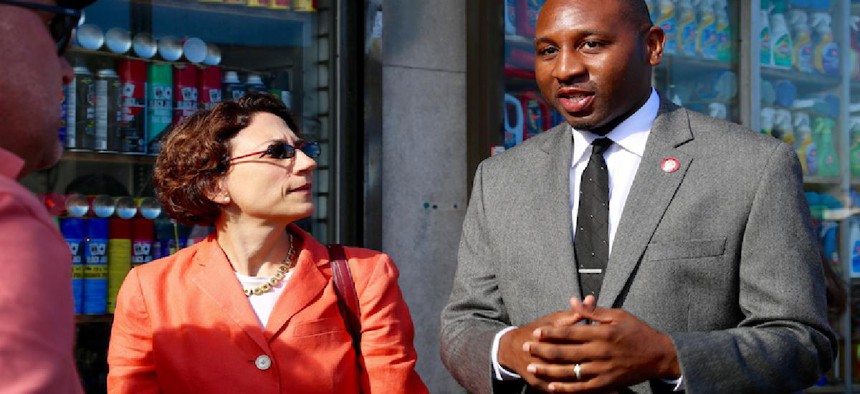Opinion
New York City must end environmental racism

As the media shines a bright light on the city of Flint, Michigan, and its lead-tainted water, too many signs are pointing toward another incident of environmental racism that has left hundreds of thousands of Americans vulnerable to the will and neglect of the powerful.
Looking at the disturbing tragedy in Flint from New York City, the most progressive city in the country, it is impossible to not take an honest look at our own cases of systemic environmental racism, whose victims are still seeking justice.
A few of these cases hit very close to home for me as a resident and representative of southeast Queens and the Rockaways.
In a city as large as New York, we create a large amount of waste, but about 80 percent of that waste is hauled to transfer stations in north Brooklyn, southeast Queens and the south Bronx, communities that are home to large minority populations. These transfer stations bring constant truck traffic with diesel particulate matter that contributes to asthma and lung cancer and can lead to heart disease and high mortality rates. There has to be a better and more equitable way to distribute this waste, and while the city is working toward cutting trash by 2030, our residents who are overburdened by pollutants deserve some relief well before that goal is reached.
In southeast Queens, those trucks do double the damage as they transport cargo to John F. Kennedy International Airport, adding to the never-ending barrage of air and noise pollution caused by the airport that diminishes the health and overall quality of life of residents on a daily basis.
In 2013, the Citizens’ Committee for Children of New York released a study, “Keeping Track of New York City’s Children,” which showed that the strongest concentrations of asthma hospitalizations in children were in the South Bronx, north and central Brooklyn, and Jamaica and the Rockaways.
While the air quality of the city in general has drastically improved with the elimination of Heating Oil No. 6 and the phase out of No. 4, the Environmental Protection Agency’s air toxics data shows that many residents of New York City live in areas at elevated or highly elevated risk for cancer and non-cancer health effects, such as respiratory disease. This same data has shown that the risks are even higher in environmental justice communities throughout the city.
Residents of southeast Queens were also ignored for decades as they had to bail water out of their homes every time a drop of rain fell because the area lacked adequate sewer infrastructure. Thankfully, I worked with Mayor Bill de Blasio and Department of Environmental Protection Commissioner Emily Lloyd to secure $1.2 billion to plot a path to ending this systemic neglect, but it is a long road to full recovery.
The de Blasio administration has been making a concerted effort to clean up environmental issues across the city, but it is imperative that both the City Council and the administration ensure that the communities suffering from the highest risk get the most attention. In order to do that, we need more data in all aspects of environmental justice. This was the impetus for a Council hearing on Thursday, considering two bills that call on the Department of Environmental Protection to conduct an environmental justice study to identify and report on environmental factors and health consequences in environmental justice communities as well as requiring all city agencies to focus on measures to address and eliminate environmental injustice.
It is our job as elected representatives of this city to stand up and make progress to improve our environment for all New Yorkers, especially those who have been gasping for air and treading water for far too long.
Donovan Richards is a New York City Council member representing District 31, which covers Laurelton, Rosedale, Springfield Gardens and Far Rockaway in Queens.
NEXT STORY: City Council pay raise reeks of hypocrisy